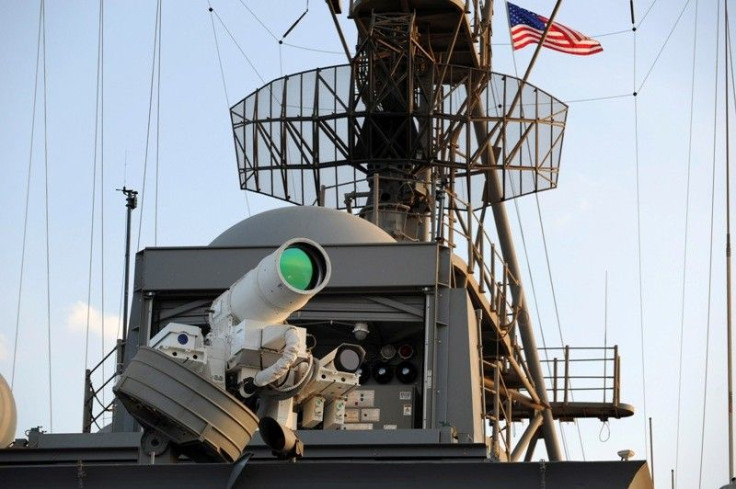US Congress Asks Pentagon To Fast Track Induction Of Rail Guns and Lasers; NATO To Move Command HQ To Romania In June

As long as the unrest in Ukraine lingers and unease with Russia persists, the U.S. and trans-Atlantic military alliance partner NATO cannot afford to be complacent either in strategy or resources. That is why the military planners in Pentagon and NATO are kept busy to make the right moves.
Now the new diktat by the US Congress, asking Pentagon for a fast-tracked acquisition of hi tech weapons and hastening of time bound induction in forces, has some special significance. Topping the list of weapons that the U.S. Navy is asked to add up are Rail gun, which can fire bullets that can move seven times faster the speed of sound and laser beams that can fire at the speed of light.
Induction of Weapons
A few months ago, Navy Secretary Ray Mabus told the National Press Club that: “We’ve got a laser weapon in the Arabian Gulf….we’ve got a rail gun under development. We’ve got some gee-whiz scientific stuff going on. Part of my job, part of our job, to get those from the lab to the war fighter quicker….That rail gun, we are working on that since the eighties; we’re gonna put it on a ship and test it next year,” with operational deployment sometime in the future.
Now in the changed scenario, Congress and Navy Secretary are impatient and they want the Navy to step up efforts to move lasers and rail guns from the lab to the fleet. The pressure from the Congress was evident when the House Armed Services Committee passed its annual defense policy bill with an added provision that directed the Secretary of the Navy “to develop a plan for fielding electric weapon systems like lasers and rail guns that rely on electric power than gunpowder to provide a briefing on the results to the House Committee on Armed Services by March 1, 2016.”
Acquisition More Important
Hailing the Congress move, Center for Strategic and Budgetary Studies senior fellow Mark Gunzinger said the Congress actually wanted programs to deliver, than keeping them long in the S&T cover. Science and Technology is the Pentagon code word for research not tied to any specific equipment, which the military may buy. Currently, he said, “they’re all S&T projects, and we need to transition them into the acquisition process.”
Navy Prowess
However, the Navy has already started showing its newly acquired offensives under a 30-kilowatt Laser Weapon System that can shoot down drones and disable attack boats. It has been installed on a ship in the Persian Gulf, that too a transport vessel named as the Afloat Forward Staging Base Ponce.
In 2016, the Flight III Arleigh Burke destroyer will come into scene, with a powerful new radar. Being built with a higher capacity to generate electricity than previous editions of the DDG-51, its Flight III could run a radar and blaze away any incoming cruise missiles with a 400-kilowat laser.
NATO Moving HQ
Meanwhile, NATO is planning to move the allied joint force command headquarter to Romania to sharpen its response to Russia's moves in eastern Europe. Accordingly, the Joint Force Command in Naples, Italy will relocate to Cincu in central Romania, for 12 days in June for supporting a NATO exercise. Around 21 NATO states are to send more than 1,000 troops to the exercise. According to commander, U.S Navy Adm. Mark E. Ferguson III, “During the exercise, 350 staff members will test their ability to command and control a multinational exercise from a forward position.”
Crimea Threat
The commander claimed that deployment to Romania will transform NATO to an alliance that can face security challenges from the south and east. He said NATO is concerned with the deployment of advanced missile systems in Crimea by Russia and the deployment of advanced fighter aircraft and increased deployment of forces which will threaten the security of the Black Sea.
As Romania's largest military shooting range, Cincu is strategic and is 180 kilometers off northwest of Bucharest. When allied joint force command moves to Romania, NATO and the U.S. will do joint exercises in Poland, Baltic states, Baltic Sea and Black Sea.
(For feedback/comments, contact the writer at k.kumar@ibtimes.com.au)




















